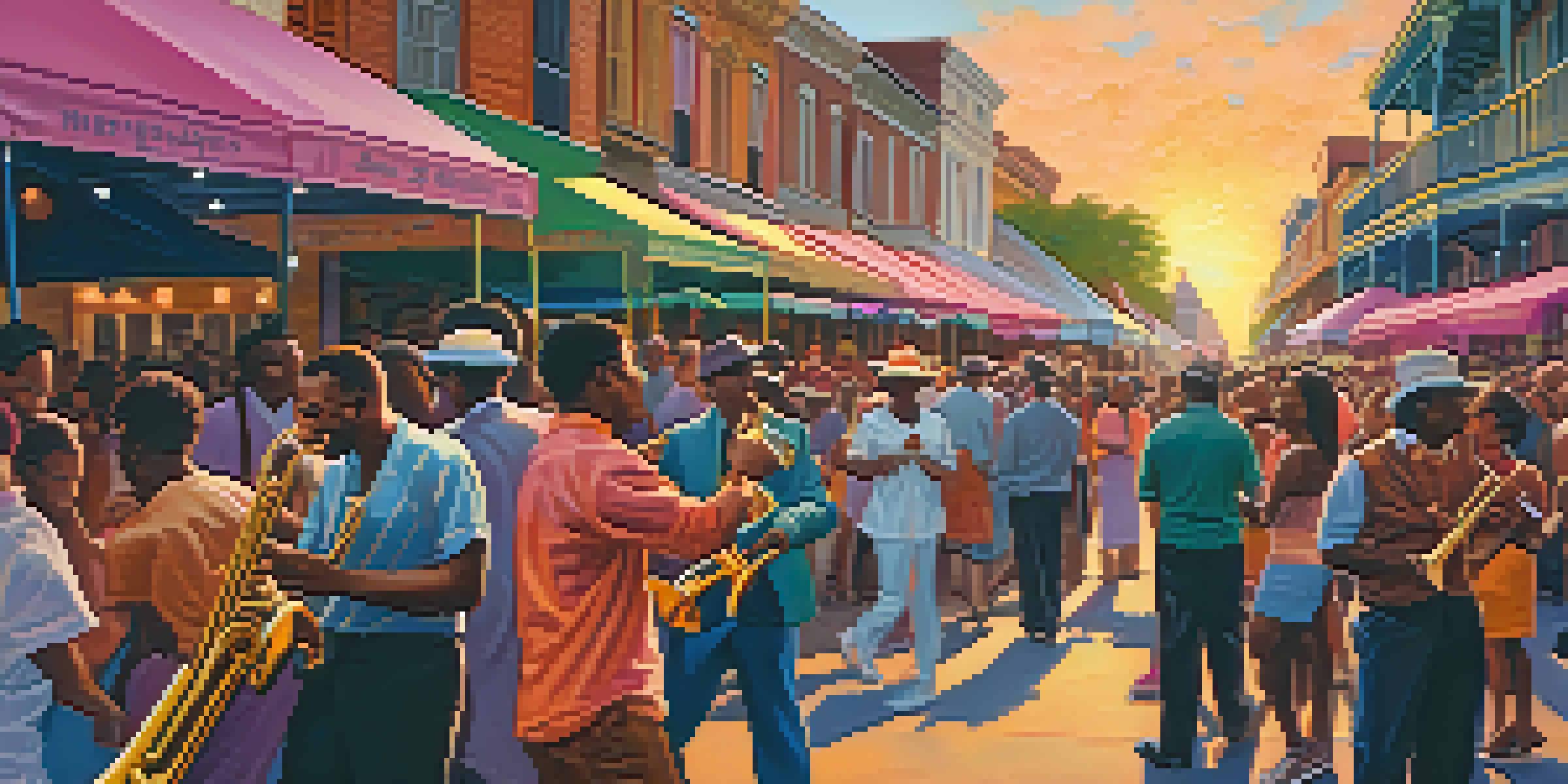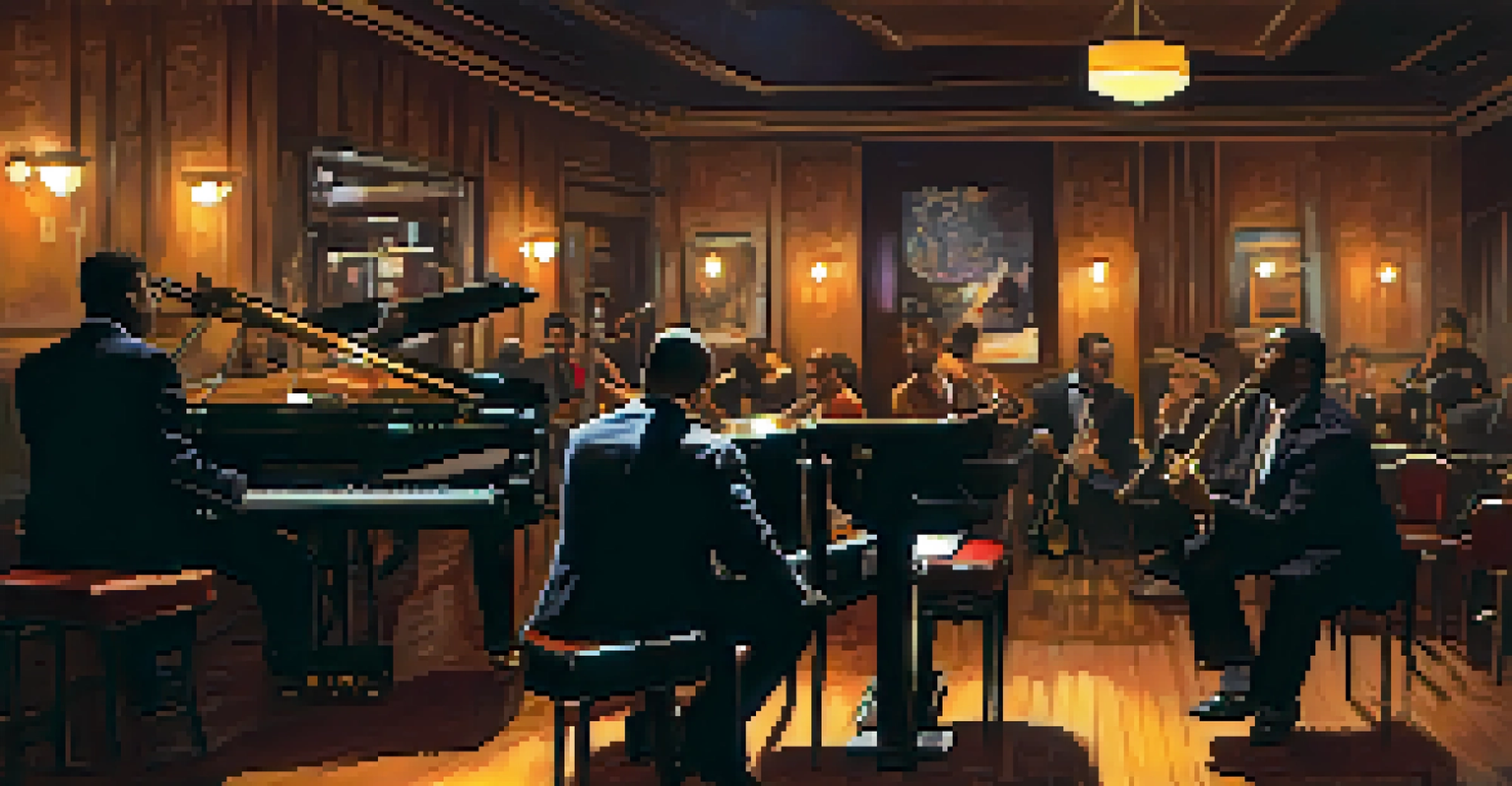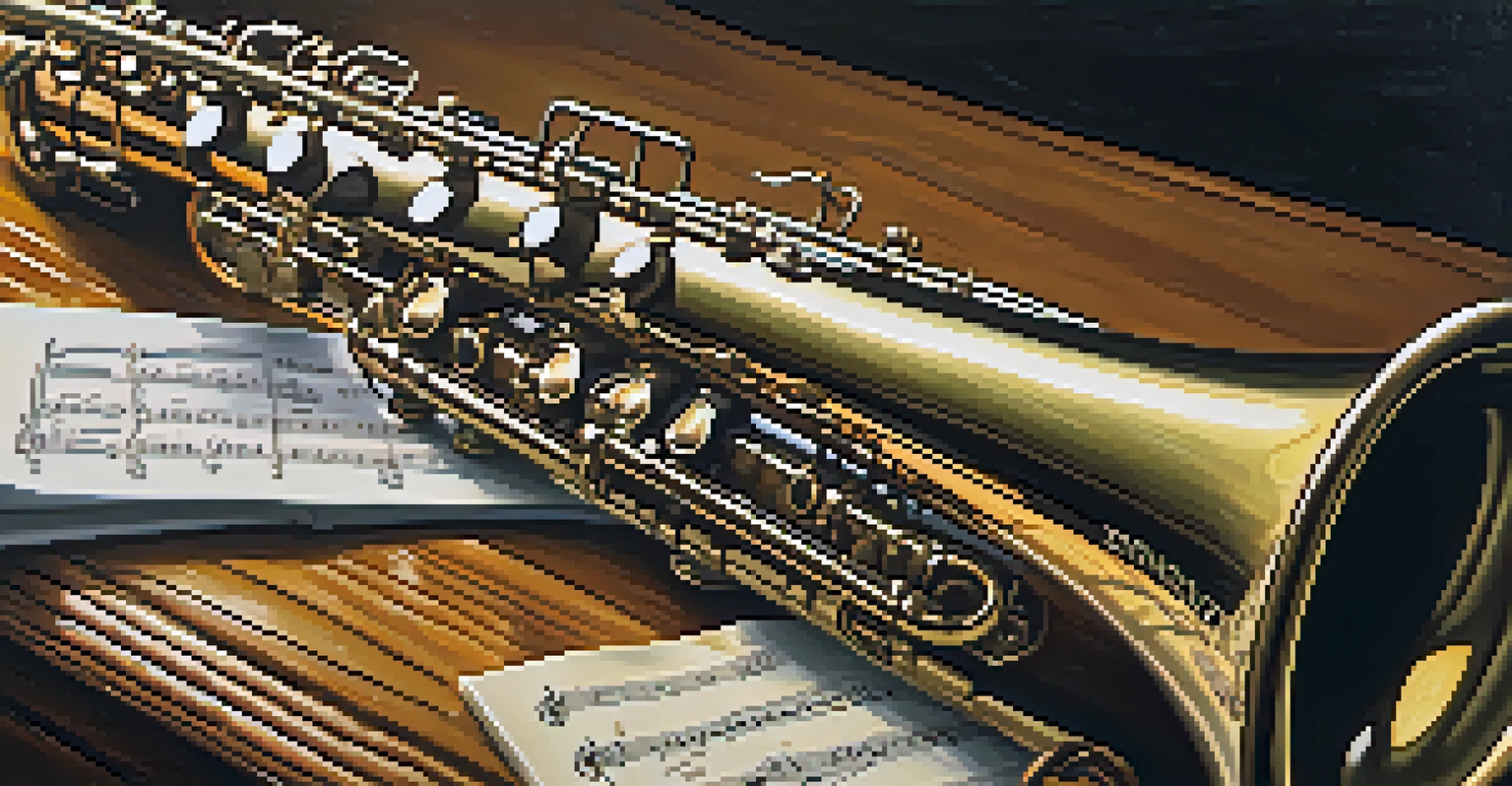Jazz: The Soundtrack of New Orleans' Multicultural Heritage

The Origins of Jazz in New Orleans
Jazz emerged in the vibrant streets of New Orleans in the late 19th century. This unique genre is a melting pot of various musical influences, including African rhythms, European harmonies, and Caribbean beats. The city's rich history as a port town facilitated the mingling of diverse cultures, which contributed significantly to the birth of jazz. It’s fascinating to think about how these musical styles fused together, creating a sound that was entirely new and exciting.
Jazz is the big band of all music. It can be anything you want it to be.
Musicians like Louis Armstrong and Jelly Roll Morton became pioneers in this genre, blending improvisation with structured melodies. They drew from the sounds around them—everything from gospel music in local churches to the lively brass bands that paraded through the streets. This blend of influences laid the groundwork for the jazz we know today, making New Orleans the true cradle of this genre.
As jazz took root, it also began to reflect the social conditions of the time. The struggles and triumphs of the African American community found their voice in this music, turning personal experiences into a collective expression. This connection between jazz and the cultural landscape of New Orleans is what makes the genre so special and enduring.
Jazz as a Cultural Conduit
Jazz serves as a conduit for cultural exchange, breaking down barriers and uniting people from different backgrounds. The improvisational nature of jazz means that it’s about collaboration, where musicians build off each other's ideas, much like the diverse communities in New Orleans. This collaborative spirit is evident in the way jazz ensembles often feature artists from various musical traditions, showcasing the city’s multicultural identity.

Festivals like the New Orleans Jazz & Heritage Festival celebrate this rich tapestry by bringing together musicians from around the world. These events not only highlight local talent but also invite international artists, fostering a global appreciation for jazz. It's more than just music; it's a celebration of cultural heritage that resonates with both locals and visitors alike.
Jazz's Diverse Cultural Roots
Jazz emerged from the fusion of African rhythms, European musical traditions, and the unique cultural landscape of New Orleans.
Through the power of jazz, stories of resilience, joy, and community come alive. Each note played carries the weight of history, reflecting the struggles and successes of those who came before. This rich narrative is what keeps the spirit of New Orleans alive, ensuring that jazz remains a vibrant part of the city's identity.
Influence of African Rhythms on Jazz
One of the most significant influences on jazz is the rich tapestry of African rhythms. These traditional sounds, brought over by enslaved people, laid the foundation for the syncopated beats that characterize jazz music. When you listen closely, you can hear how these rhythms create a pulse that makes you want to move, inviting listeners to engage on multiple levels.
The history of jazz is the history of America. It’s the sound of the city, the sound of our individual voices coming together in harmony.
In New Orleans, the blending of these African rhythms with European musical structures resulted in something entirely fresh. The call-and-response patterns, a hallmark of African music, became a key feature in jazz improvisation. This interaction between musicians mirrors the communal spirit found in African traditions, where music is often a shared experience.
As jazz evolved, it continued to draw on these rich African musical heritage elements, ensuring that this influence remains at the genre's core. Today's jazz musicians still honor these roots while pushing boundaries, proving that the genre is both timeless and forward-thinking. It's a beautiful reminder of how music can evolve while retaining its cultural significance.
The Role of European Musical Traditions
European musical traditions have also played a crucial role in shaping jazz, particularly through the introduction of harmony and song structure. Instruments like the piano and brass were incorporated into jazz ensembles, adding a layer of complexity to the music. This blend of European and African influences creates a unique sound that defines jazz and sets it apart from other genres.
Composers and musicians from Europe brought with them classical techniques that jazz artists adapted into their own styles. The use of improvisation allowed musicians to take classical motifs and transform them into something new and spontaneous. This cross-pollination of ideas enabled jazz to flourish, creating a dynamic interplay between structure and freedom.
Jazz as a Voice for Change
Throughout its history, jazz has served as a powerful platform for social expression, reflecting the struggles and triumphs of the African American community.
As jazz continued to evolve, it absorbed elements from various European genres, including folk and classical music. This adaptability is what has allowed jazz to thrive in different contexts, making it a truly global genre. The harmonious blend of these influences is a testament to the multicultural heritage that jazz embodies, showcasing the beauty of musical collaboration.
The Impact of Immigration on Jazz
Immigration has played a pivotal role in the development of jazz, with various communities contributing their own musical traditions. For example, the arrival of Creole and Spanish immigrants introduced new rhythmic patterns and melodies that enriched the jazz sound. This fusion of cultural influences is what makes New Orleans a unique musical landscape, where different traditions coexist and thrive.
The contributions of immigrant musicians further diversified jazz, leading to the creation of sub-genres that reflect their cultural backgrounds. For instance, the incorporation of Caribbean rhythms and Latin influences can be heard in styles like mambo and salsa jazz. This blending of cultures not only enhances the music but also tells the story of the city’s rich multicultural fabric.
As jazz evolved, it became a platform for immigrants to share their stories and experiences. Musicians used their craft to express their identities, creating a dialogue between cultures. This ongoing exchange is what keeps jazz vibrant and relevant, ensuring that it remains a true reflection of the world around us.
Jazz: A Reflection of Social Change
Throughout its history, jazz has mirrored the social changes occurring in America, particularly in relation to civil rights and cultural identity. During the jazz age of the 1920s, the genre became synonymous with the Roaring Twenties, embodying a spirit of freedom and rebellion. This era saw jazz musicians break racial barriers, performing in venues that were once segregated, paving the way for greater acceptance.
As the civil rights movement gained momentum in the 1960s, jazz musicians used their music as a form of protest and expression. Artists like John Coltrane and Nina Simone infused their work with messages of social justice, turning their performances into powerful statements. This ability to address societal issues through music is part of what makes jazz so impactful.
The Future of Jazz is Bright
Young musicians in New Orleans are blending traditional jazz with modern genres, ensuring that the art form remains vibrant and relevant.
Today, jazz continues to be a platform for dialogue, with artists reflecting current social issues in their work. As they draw from the past while looking toward the future, jazz musicians remain committed to using their art to inspire change. This ongoing legacy ensures that jazz is not just a soundtrack to New Orleans but also a voice for the voiceless.
The Future of Jazz in New Orleans
As we look to the future, jazz in New Orleans is poised to continue its evolution while honoring its roots. Young musicians are experimenting with new sounds and technologies, blending traditional jazz with genres like hip-hop and electronic music. This innovative spirit ensures that jazz remains relevant and accessible to new generations of listeners.
Jazz education programs are also playing a vital role in nurturing young talent and keeping the genre alive. Institutions like the New Orleans Center for Creative Arts provide aspiring musicians with the tools they need to develop their craft. These programs not only teach the technical aspects of jazz but also instill a deep appreciation for its cultural heritage.

The resilience of jazz is a testament to its ability to adapt and thrive in changing times. As New Orleans continues to celebrate its multicultural heritage, jazz will remain an integral part of the city's identity. With each new note played, the legacy of jazz lives on, ensuring that this vibrant genre continues to resonate for generations to come.